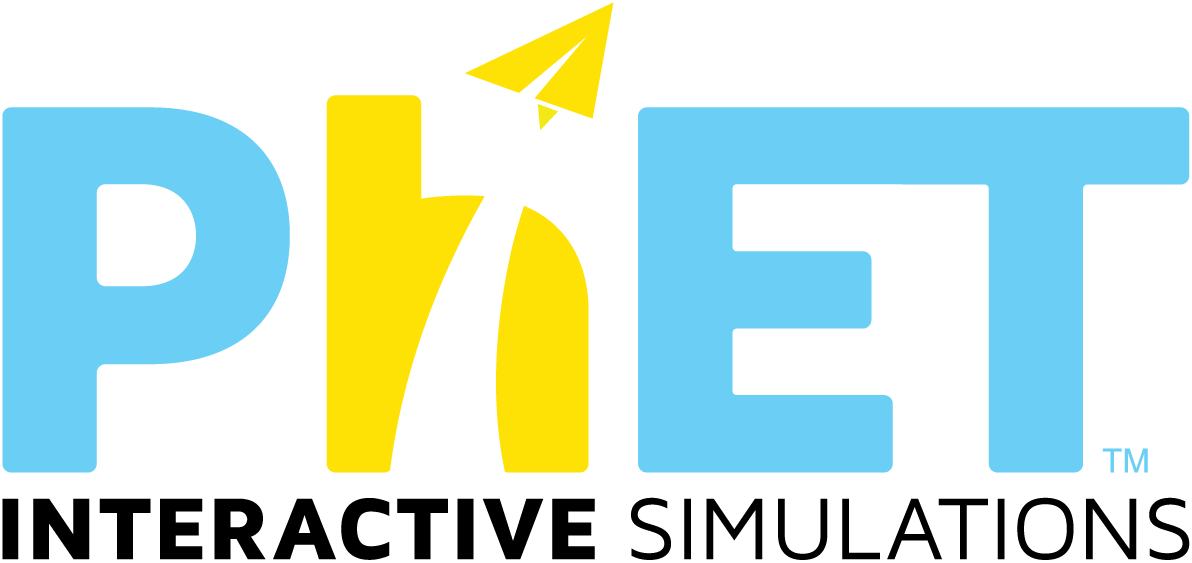334 Such-Ergebnisse, passend zu middle school
Simulationen
- Ableitung und Integral (HTML5)
- Aggregatszustände (HTML5)
- Aggregatszustände: Grundbegriffe (HTML5)
- Alphazerfall
- Arithmetik - Zahlenkunst (HTML5)
- Atomare Wechselwirkung (HTML5)
- Auftrieb (HTML5)
- Auftrieb: Grundlagen (HTML5)
- Balanceakt (HTML5)
- Ballons & Auftrieb
- Ballons und statische Elektrizität (HTML5)
- Ballons und statische Elektrizität
- Batteriespannung
- Batterie-Widerstandsstromkreis
- Baue ein Atom (HTML5)
- Baue einen Atomkern (HTML5)
- Betazerfall
- Bewegung in 2D
- Brüche: Einführung (HTML5)
- Brüche: Gemischte Zahlen (HTML5)
- Brüche: Gleichsetzen (HTML5)
- Brüche bilden (HTML5)
- Brüche paaren (HTML5)
- Coulomb-Gesetz (HTML5)
- Der bewegte Mann
- Der photoelektrische Effekt
- Der Treibhauseffekt
- Dichte (HTML5)
- Diffusion (HTML5)
- Dipolmoleküle (HTML5)
- Molekulare Polarität
- Drehmoment
- Eigenschaften von Gasen (HTML5)
- Elektrisches Feld der Träume
- Elektrisches Hockey
- Elektromagnetische Induktion (HTML5)
- Energieformen und Energieumwandlungen (HTML5)
- Energieskatepark (HTML5)
- Energieskatepark (Einstieg) (HTML5)
- Ernährung und Bewegung
- Faradays elektromagnetisches Labor (HTML5)
- Faradays Elektromagnetisches Labor
- Farbwahrnehmung (HTML5)
- Flächen belegen (HTML5)
- Flächenmodell Algebra (HTML5)
- Flächenmodell Dezimalzahlen (HTML5)
- Flächenmodell Einführung (HTML5)
- Flächenmodell Multiplikation (HTML5)
- Flüssigkeitsdruck und Durchfluss
- Fourier: Wellen erzeugen (HTML5)
- Funktionen Düse (HTML5)
- Funktionen Düse (Einstieg) (HTML5)
- Gase (Einführung) (HTML5)
- Generator (HTML5)
- Genexpression: Grundlagen (HTML5)
- Genexpression - die Grundlagen
- Genmaschine: Das Lactose-Operon
- Geometrische Optik (HTML5)
- Geometrische Optik: Grundlagen (HTML5)
- Geraden ziehen (HTML5)
- Gleichheit schaffen (HTML5)
- Gleichheit schaffen: Grundlagen (HTML5)
- Gleichheit schaffen: Zwei Variablen (HTML5)
- Gletscher
- Graph einer Funktion
- Gravitationskraft: Einstieg (HTML5)
- Gravitationslabor (HTML5)
- Gravitation und Umlaufbahnen (HTML5)
- Hookesches Gesetz (HTML5)
- Irrgarten
- Isotope und Atommasse (HTML5)
- John Travoltage (HTML5)
- John Travoltage
- Käfer-Karussell
- Kapazität Labor: Einstieg (HTML5)
- Keplersche Gesetze (HTML5)
- Kernspaltung
- Kernspintomographie ganz einfach
- Kondensatorlabor
- Konzentration (HTML5)
- Kräfte in einer Dimension
- Kräfte und Bewegung
- Kräfte und Bewegung: Grundlagen (HTML5)
- Kurven Anpassung (HTML5)
- Ladungen und Felder (HTML5)
- Lambert-Beer's Absorptionslabor (HTML5)
- Laser
- Leitfähigkeit
- Lichtbrechung (HTML5)
- Lineare Regression (HTML5)
- Mach zehn draus (HTML5)
- Magnete und Elektromagnete (HTML5)
- Magnet und Kompass (HTML5)
- Marienkäferbewegung 2D
- Massen und Federn (HTML5)
- Massen und Federn: (HTML5)
- Massen und Spiralfedern
- Mein Sonnensystem (HTML5)
- Membrankanäle
- Mikrowellen
- Mittelwert: Anteil und Durchschnitt (HTML5)
- Mittelwert und Abweichung (HTML5)
- Modell des Wasserstoffatoms (HTML5)
- Modelle des Wasserstoffatoms
- Moleküle bauen (HTML5)
- Moleküle und Licht (HTML5)
- Molekülgeometrie - Grundlagen (HTML5)
- Molekülgeometrien (HTML5)
- Mondlandefähre
- Natürliche Selektion (HTML5)
- Neonlicht und andere Entladungslampen
- Ohmsches Gesetz (HTML5)
- Optische Quantenkontrolle
- Pendel (HTML5)
- pH Skala (HTML5)
- pH Skala: Grundlagen (HTML5)
- Plattentektonik
- Plinko Nagelbrett (HTML5)
- pro Einheit (HTML5)
- Projektilbewegung (HTML5)
- Projektil-Datenlabor (HTML5)
- Proportionen Spiel (HTML5)
- Quadratische Kurven (HTML5)
- Quantenmessung (HTML5)
- Quantenmünzwurf (HTML5)
- Radiometrische Datierung
- Radiowellen und Elektromagnetische Felder
- Reaktanden, Produkte und Reste (HTML5)
- Reaktionen & Geschwindigkeiten
- Reaktionsgleichungen ausgleichen (HTML5)
- Reibung (HTML5)
- Resonanz
- Reversible Reaktionen
- Rutherford Streuung (HTML5)
- Salze & Löslichkeit
- Saure & basische Lösungen (HTML5)
- Schall
- Schiefe Ebene
- Schiefe Ebene: Kräfte und Bewegung
- Schwarzkörper Strahlung (HTML5)
- Seilwelle (HTML5)
- Signal-Stromkreis
- Steigung und Achsenabschnitt (HTML5)
- Stimulation eines Neurons (HTML5)
- Stoffmengenkonzentration (HTML5)
- Stoß Labor (HTML5)
- Strahlende Ladung
- Stromkreise schalten: Gleichstrom (HTML5)
- Stromkreise schalten: Virtuelles Gleichstrom-Labor (HTML5)
- Stromkreise schalten: Wechselstrom (HTML5)
- Stromkreise schalten: Wechselstrom - Virtuelles Labor (HTML5)
- Terme Komponieren (HTML5)
- Transport an Membranen (HTML5)
- Treibhauseffekt (HTML5)
- Trigonometrie Tour (HTML5)
- Unter Druck (HTML5)
- Vektor Addition (HTML5)
- Vektor Addition: Gleichungen (HTML5)
- Verhältnisse schätzen
- Verhältnis und Proportion (HTML5)
- Verteilung der Projektil-Proben (HTML5)
- Viereck (HTML5)
- Wellen Einführung (HTML5)
- Wellen Interferenz (HTML5)
- Wellen zusammensetzen nach FOURIER
- Widerstand in einem Kabel (HTML5)
- Zahlengerade: Abstand (HTML5)
- Zahlenpaare (HTML5)
- Zahlenspiel (HTML5)
- Zahlenstrahl: Ganze Zahlen (HTML5)
- Zahlenstrahl: Operationen (HTML5)
- Zahlen vergleichen (HTML5)
- Zucker- und Salzlösungen
Beiträge
- Gas Properties-Inquiry Middle School
- Sound_Inquiry for Middle School
- Balloons and Static Electricity for Middle School
- Circuit inquiry for Middle school
- Conservation of Energy for Middle School
- Projectile investigation for Middle School
- Pendulum investigation for Middle School
- States of Matter for Middle School
- Gas Investigation for Middle School
- Ramp Middle School Inquiry
- Energy Skate Park for Middle School(Inquiry Based)
- Energy Skate Park Basics
- Middle School Math Sim Alignment
- Density Exploration
- NGSS Alignment Doc for Middle School targeted PhET Sims
- Air Resistance Lesson
- Forces and Motion Lesson
- Chemistry Theater
- Energy Skate Park Basics Lesson
- Natural Selection Lesson by UTeach
- Balloons and Static Electricity
- Density Lesson (with Putty Lab)
- Build an Atom
- Gravity and Orbits Lesson
- Experimental Design with Forces
- Hot Air Balloons Lesson
- Building Fraction Sense Using “Fractions Intro PhET Simulation”
- Wave Basics for Middle Schoolers
- Middle School - Electric Circuits
- States of Matter Simulation
- Two Types of Energy - Mass & Spring
- Build a Molecule
- States of Matter Simulation Lab
- Properties of Waves - Lab Guide
- Middle School and High School Common Core Alignment Document
- Pendulum variables
- Reactions and Rates
- Force introduction
- How do PhET simulations fit in my middle school program?
- Net force
- Investigating Net Force
- Middle School Science
- Heat it Up
- Mixing paint with ratios
- Using the area model with expressions
- Properties of representations of linear functions
- Color Vision pHet Lab
- Middle School - series and parallel circuits
- Describing Location and Movement
- Gas Laws
- Density-introduction
- Exploring EM Forces
- Molecules and Light-inquiry for high school
- Induction (high school version) (Inquiry Based)
- Inquiry Activity: Waves
- Pendulum Virtual Lab 2021
- Arbeitsblatt Natürliche Selektion
- Balanced and Unbalanced Forces - What Causes Acceleration
- Using PhET in High School Chemistry- all my activities in pdf
- the advantages of species physical appearances corresponding to living environment
- Speed of a Wave NGSS aligned
- Molarity Simulation
- Reaction Rates
- Isotopes
- Arithmetic Games (Inquiry Based)
- Sound Waves
- Energy Transfer
- PhET: Energy Forms Worksheet
- Basics of Electricity
- Homework Activity I
- Forces and Motion Basics Interactive Activity
- Pendulum Lab: What Affects the Period?
- PhET Lab States of Matter Basics
- Gravity Lab
- High School Inclusion Class Density Lab
- PhET Interactive Lab on pH
- Measurements of Density
- THE MOVING MAN: DISTANCE, DISPLACEMENT, SPEED & VELOCITY
- High School Chemistry 1 level Balancing Equations
- High School Chemistry 1 level: Limiting reagents
- Visual Nucleosynthesis [Basic High School]
- Collecting and analyzing density data
- Greenhouse effect activity
- PHET: Masses and Springs 2021
- High School Exploratory Lab for Balloons and Static Electricity
- Electric Fields of Dreams for High School Exploratory Lab
- Exploring the density of mysterious objects
- Float or Sink? An essay on the density of materials
- Conservation of Energy - conceptual
- Wave Interference- Waves (Sound and Light)
- Comparing the properties of different materials
- What Type of Light Bulb Should I buy for my Grandma?
- Projectile Motion
- Introduction to Waves: Liquid Matter, Sound, and Light
- Exploring Chemical Reactions and the Law of Conservation of Mass
- States of Matter - Lab Simulation - student procedures and questions
- Lesson Plan for Teaching Shapes of Molecule
- Induction (college homework version) (Inquiry Based)
- Bunny Blitz
- PhET Energy Forms and Changes Virtual Lab
- (BNCC) Comparando as propriedades de diferentes materiais
- Projectile Motion Discovery
- Geometric figures
- Colors, Bunnies and Wolves: does the strongest survive?
- Water Waves in an Electric Sink
- Simple Pendulum
- Opdrachten bij Reactanten, producten en resten
- Conservation of Energy Exploration with Skatepark Physics
- The Simple Pendulum- What affects the Period of the pendulum?
- Bending Light Student Worksheet
- Lens Inquiry
- Molecule Shapes Advanced
- Gravity Force Lab
- Investigating Forces and Motion Through Inquiry
- Exploring Stars and Blackbodies
- Experiment to determine relationship between wavelength, frequency and speed
- Ohm's Law Lab - Virtual
- Ray Diagrams for Concave and Convex Mirrors
- Electromagnetic Induction
- Making STABLE Atoms Lab
- Force and Motion Basics - Second grade
- Refraction
- Reactions and Rates: Learning Goals from the design team (Inquiry Based)
- Projectile Motion Lab #2
- Conservation of Energy (Energy Skate Park)
- Moving Man II: Acceleration vs. Time
- Moving Man I: Velocity vs. Time Graphs
- Charges and Fields
- Ohm's Law, Kirchhoff's Laws, Resistors in Parallel and Series Lab
- The Two-Plate Special
- Energy Forms and Changes
- Balancing equation
- Introduction to Current, Voltage, and Resistance
- Projectile Motion
- Bouncing Off the Walls
- Heat or temperature
- My Solar System
- Exploring the Energy Skate Park
- Newton's Second Law of Motion
- Charges and Charged Objects Investigation
- 'Lectronic Plates
- Pixel Peeping
- Moving Man Motion Graph Review
- Magnet and Compass
- Spring Force, Spring Constant and Elastic Potential Energy
- Heat or temperature?
- Build An Atom Guided Inquiry
- Introduction to the Gas Laws using PhET simulations
- Quest for the Coulomb Cup
- Cavendish Lab
- MS and HS TEK to Sim Alignment
- DC Circuit Lab
- Projectile Motion Worksheet
- Greased Lightning
- Introduction to the gas laws
- Harmonic oscillator
- Worlds of Wonder
- Beer's Law Lab: Introduction to Beer's Law
- Electric Field Hockey Post-Game Analysis
- Atomic Models and Spectroscopy
- Computer Simulations as a Tool to Assist Teaching Basics of Electromagnetism (Simulações Computacionais Como Ferramenta Auxiliar ao Ensino de Conceitos Básicos de Eletromagnetismo)


